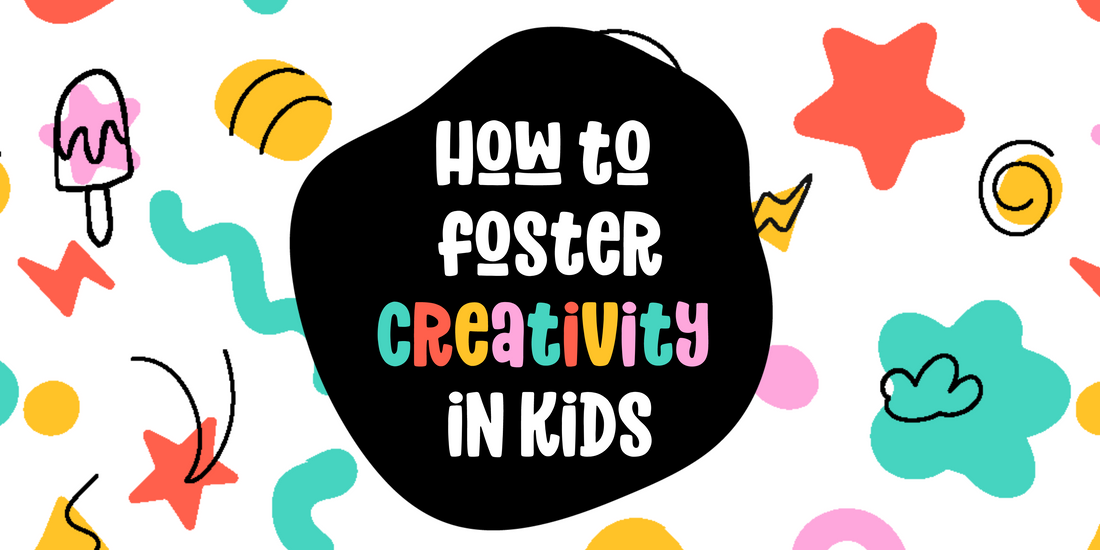In today’s fast-paced world, it’s more important than ever to nurture creativity in children. Encouraging creative expression helps kids develop problem-solving skills, boosts their confidence, and gives them the freedom to explore their unique ideas. Parents and carers play a vital role in fostering this creativity—whether it’s through imaginative play, crafting, or simply letting them dream up their own worlds.
Here are some top tips to help you foster creativity in your child, with some fun ideas to get started!
1. Provide Open-Ended Materials for Play and Exploration
One of the best ways to encourage creativity is to give your child access to open-ended materials—items that don’t come with strict instructions, allowing for free play and imagination. Craft supplies like markers, paper, recycled materials, and, of course, air-dry clay, are perfect for this.
With air-dry clay, your child can mold and shape whatever their mind dreams up, whether it’s a creature from another planet or a bowl for holding their treasures. Because the material is so versatile, they can experiment and let their imagination guide them, which is key to creative growth.
2. Create a Space for Creativity
Children need a designated space to explore their creativity. Set up a crafting corner at home where they have easy access to art supplies, clay, building blocks, and other creative tools. This doesn’t have to be a large area—it could simply be a table with materials nearby. The goal is to create a space where they feel free to experiment without worrying about making a mess or getting things “wrong.”
Encouraging your child to regularly use this space for activities like painting or crafting with air-dry clay will make creativity a natural part of their day. You can also display their creations, showing them that their efforts are valued.
3. Encourage Process Over Product
When fostering creativity, it’s important to focus on the creative process rather than the end result. Children need the freedom to explore ideas and try new things without the pressure to create something “perfect.”
Air-dry clay is great for this because it allows for endless experimentation. Whether their sculpture turns out as planned or not, it’s the act of shaping, squishing, and molding that is most valuable. Ask them about their creative process: “What did you enjoy most about making this?” or “What would you like to try next?” This helps shift the focus from the outcome to the joy of creating.
4. Give Them Time to Play and Explore
Creativity thrives when kids have time to think, daydream, and experiment. In today’s busy schedules, it can be easy to fill a child’s day with structured activities, but unstructured time is just as important. Allow your child time to engage in imaginative play or craft activities without strict time limits.
For instance, if they’re making something with air-dry clay, give them the time they need to work at their own pace. Let them build, rebuild, and experiment, and avoid rushing the process. Sometimes, the most imaginative ideas come when kids have the time to let their minds wander.
5. Introduce New Tools and Techniques
To keep their creativity growing, it’s important to expose children to new materials, tools, and techniques. Try introducing them to different types of art forms, from painting and drawing to sculpting and mixed media. Air-dry clay is an excellent medium for kids who are new to 3D art and want to create sculptures or objects without the need for a kiln.
As they become more familiar with clay, challenge them to create more detailed projects, like animals, figurines, or even miniature models of their favorite things. You can also show them how to paint their dried creations, adding another layer of creative expression.
6. Embrace Mistakes and Encourage Problem-Solving
A big part of creativity is learning to embrace mistakes and find new solutions when things don’t go as planned. When your child encounters a problem—whether it’s a tower of blocks that won’t stand or a clay figure that keeps falling over—encourage them to think of creative solutions rather than getting frustrated.
For example, if they’re working with air-dry clay and a piece breaks off, show them how to fix it or brainstorm new ways to incorporate the break into their design. This teaches resilience and the value of persistence in the creative process.
7. Praise Their Efforts, Not Just the Results
When your child shares their artwork or creative project with you, focus on praising the effort they put in rather than just the finished product. Instead of saying, “That’s a beautiful drawing,” try saying, “I love how you used so many colors!” or “It looks like you put a lot of thought into this!”
For kids working with air-dry clay, highlight specific things they’ve done well: “That sculpture has such cool details—how did you come up with that idea?” This type of feedback encourages them to keep experimenting and growing without feeling like they have to meet a specific standard.
Final Thoughts....
Fostering creativity in children is about giving them the space, tools, and encouragement to explore their ideas and express themselves. By providing them with open-ended materials like air-dry clay, celebrating their efforts, and embracing the process, you’re helping them develop critical thinking skills, emotional resilience, and a lifelong love for creating.

